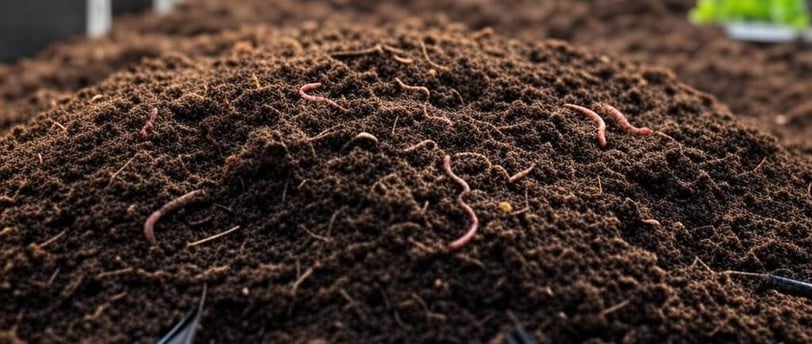Importance of Soil Structure
Soil structure refers to the arrangement of soil particles into aggregates or peds, which influences soil properties like water movement, aeration, and root penetration.
SOIL AMMENDMENTS
GJD
5/8/20241 min read


Main types of Soil Structure:
Granular - Typical in topsoil, characterized by loosely packed, rounded peds, good for root growth, water, and air movement.
Blocky - Cubes or blocks with flat or slightly rounded faces. Can be angular or sub angular. Common in subsoils, providing good drainage and aeration.
Prismatic - Vertical columns with flat tops, often found in subsoils with high clay content, allowing for vertical water movement but less horizontal.
Columnar - Similar to prismatic but with rounded tops, often seen in soils with high sodium content.
Platy - Thin, flat plates, often horizontally layered, which can impede water and root movement if compacted.
Massive - No visible structure, appears as one solid mass, often in highly compacted or clayey subsoils, poor for plant growth.
Single Grain - Individual soil particles not aggregated, typical in sandy soils, good for drainage but poor in retaining water and nutrients.
Importance of Soil Structure:
Water Infiltration and Retention: Well-structured soil allows water to penetrate and be stored effectively.
Aeration: Good structure ensures adequate air spaces for root respiration and microbial activity.
Root Penetration: Aggregates facilitate root growth by providing spaces for roots to expand.
Nutrient Availability: Soil structure affects how nutrients are held and made available to plants.
Erosion Resistance: Structured soil is less prone to erosion as aggregates bind soil particles together.
Factors Affecting Soil Structure:
Organic Matter: Increases aggregation, improving structure.
Soil Management Practices: Tillage can disrupt structure, while practices like crop rotation and cover cropping can enhance it.
Biological Activity: Worms, fungi, and bacteria help form aggregates.
Clay Content and Type: Clays can bind particles but also make soil sticky when wet.
Chemical Properties: High sodium levels can cause dispersion, leading to poor structure.
Improving Soil Structure:
Adding organic matter (compost, manure)
Reducing tillage to maintain natural aggregates
Using cover crops to protect and enrich soil
Proper irrigation to prevent compaction
